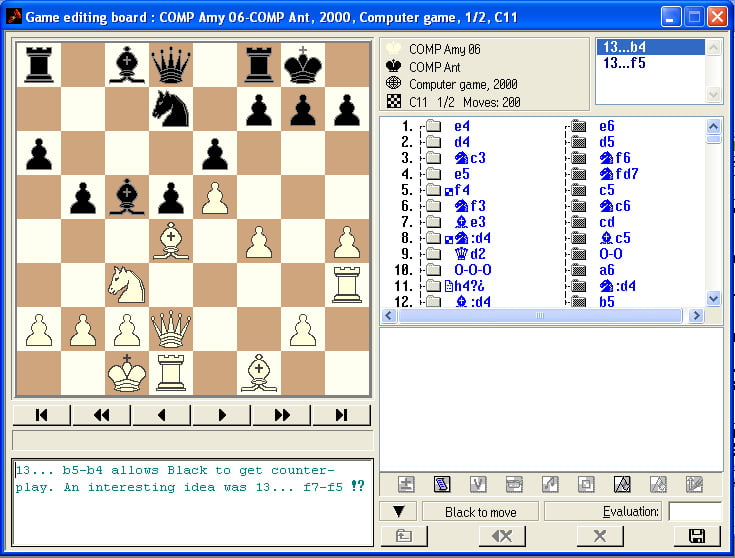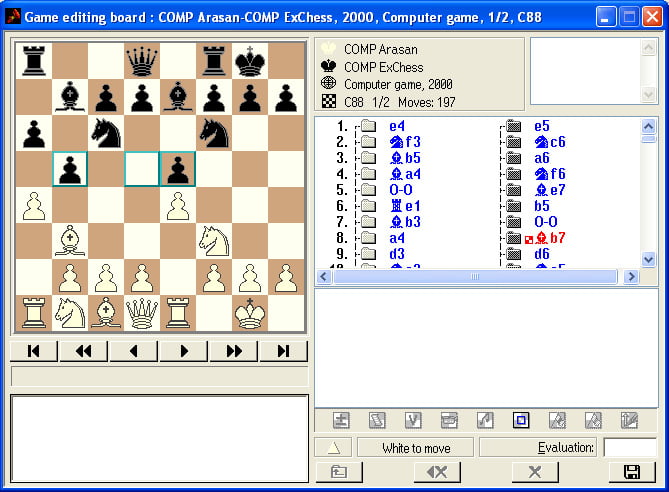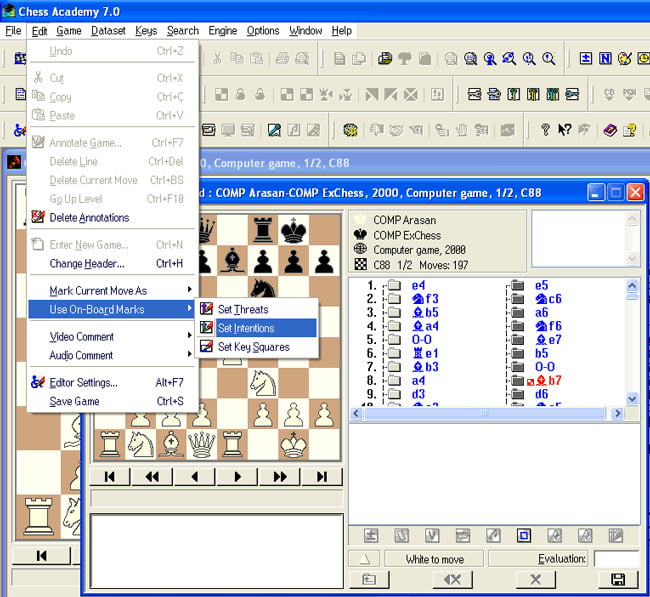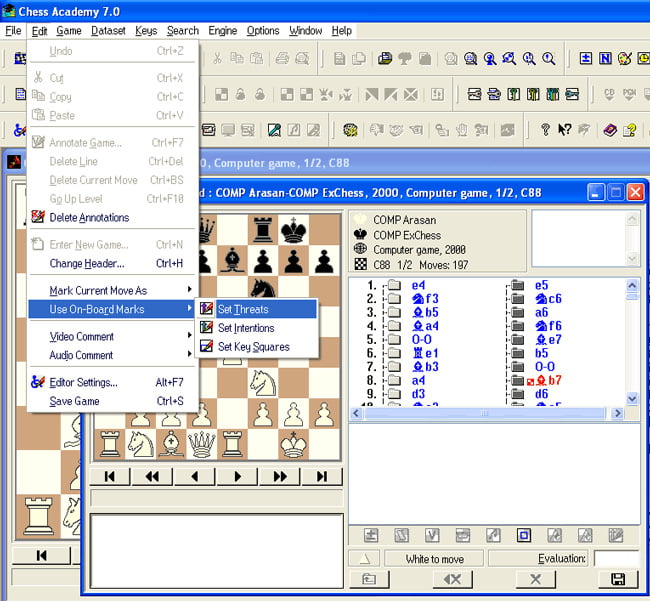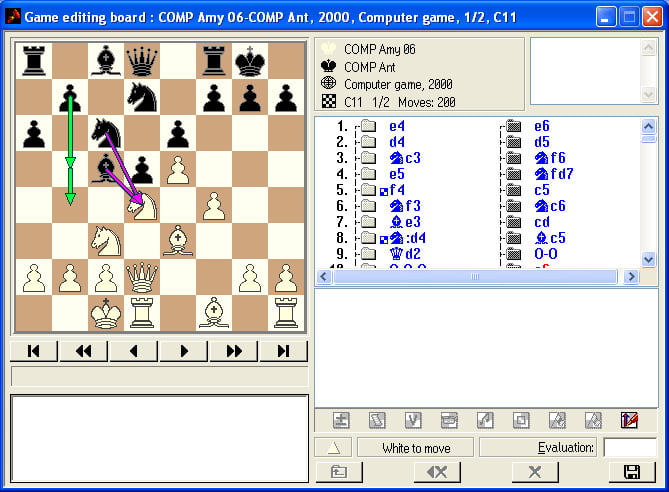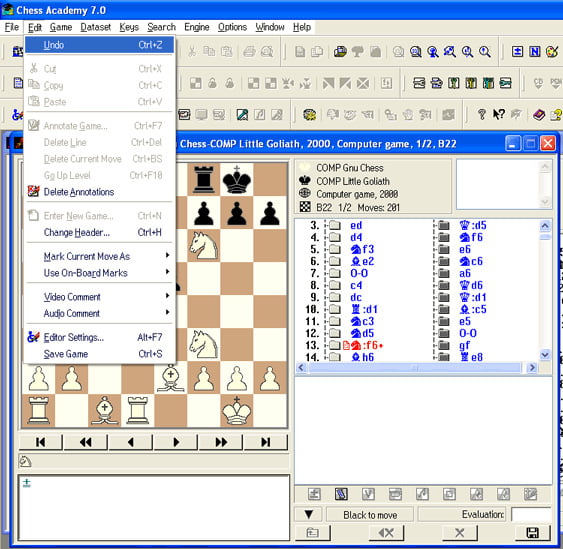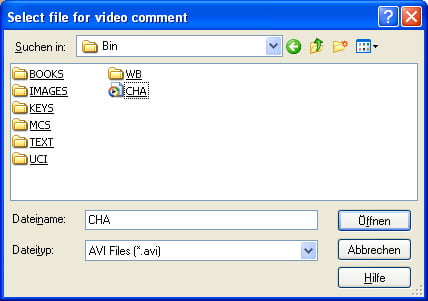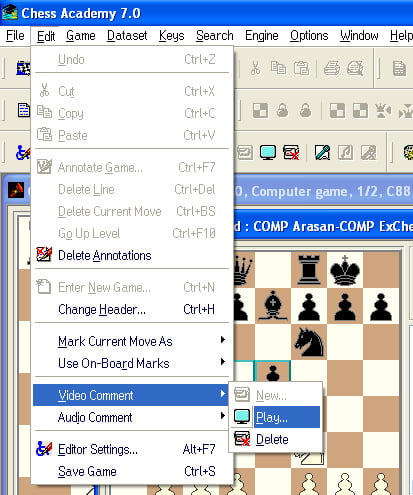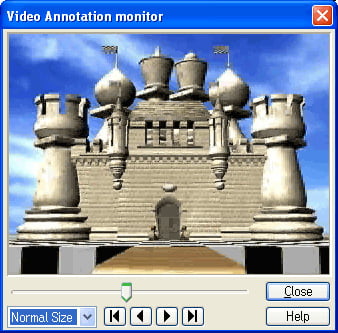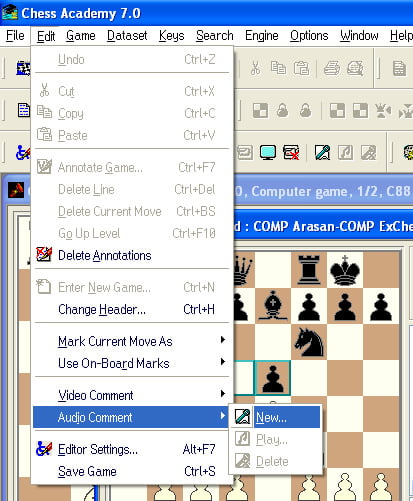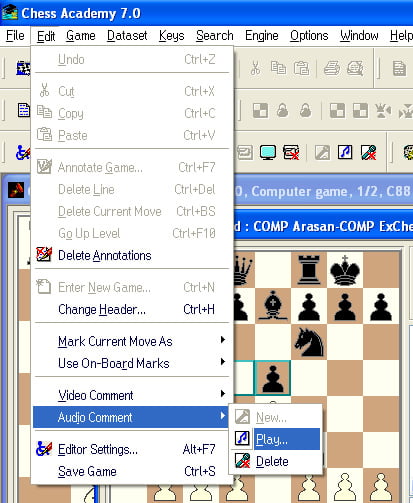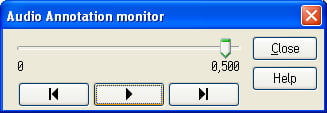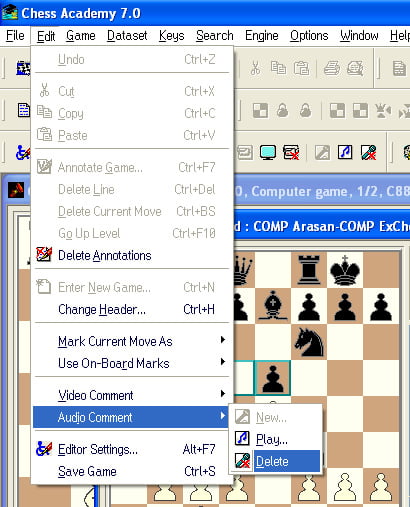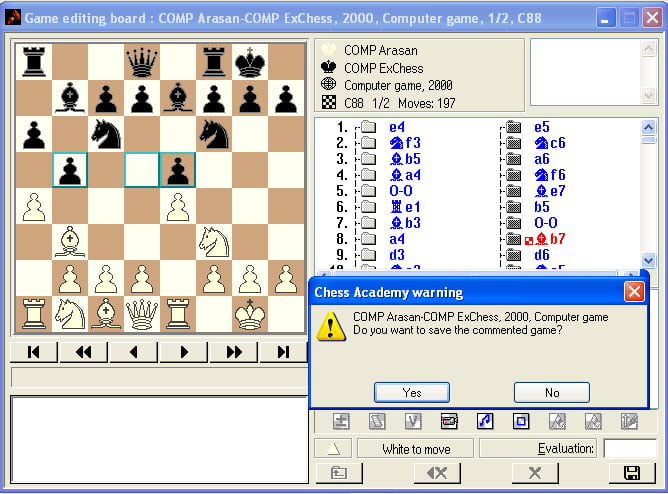A move on the chessboard is performed by pointing the piece with the left mouse button, then pressing down the button and moving the cursor to the desired square. Then release the mouse button.
Note: Chess Academy detects illegal moves and displays the corresponding messages. To castle, select the king with the mouse and move it to the square it will occupy after castling. Chess Academy will automatically move the rook, too. If you are promoting a pawn, the program shows the box where you can select a promotion piece. Chess Academy will prompt you for the piece to promote a pawn to.


